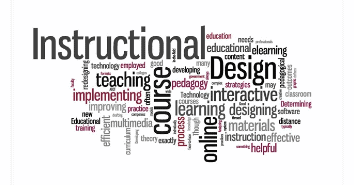There have been many articles written about the Death of Instructional Design. Whether you believe Instructional Design is a dying breed or one that is evolving into something new, the question is really “Is instructional design a skill or a job role?”
What is clear is that the current model where all training requests are fulfilled by a select group of instructional designers does not scale in the corporate world. With the ever-increasing speed of business, the demand for training exceeds available resources. If you need to prepare for a new sales program or product rollout, how can you shorten the cycle from concept to delivery?
The traditional model has been to match instructional designers (ID) with subject matter experts (SME), who spend their time trying to transfer knowledge from the SME to ID. This process typically requires weeks, sometimes months, given the nature of the content and tools available. There’s no way a SME can devote the time to learn how to use tools like Storyline, video editing, Illustrator, Photoshop, etc. or the very basic theory of adult learning. What is the best way to shorten this cycle?
One approach would be to increase capacity, i.e. get more IDs or SMEs. But most organizations do not have the resources or this luxury. Another option is to outsource functions to external vendors. But they do not have the operational expertise to design the right solution. How can you optimize the process to reduce the SME to ID knowledge transfer while maintaining a low-cost approach?

Most instructional designers will tell you that you can’t train SMEs to be IDs.
No one will argue that professionally trained instructional designers
have much more experience in this domain. However, one can no longer
simply ignore the issue of whether or not technology driven frameworks
can be applied to automate instructional design best practices. This is
being done in many other business functions, so why not instructional
design?
For example, in software engineering there once was a great divide between development and testing. As the software got more sophisticated, more and more manual testing was added. Over time, people realized this couldn’t scale. Tools were built to aid developers with testing. Test-driven development became the new standard process. Quality engineers moved on to new work, away from manual testing. Everyone benefitted from this change.
The same approach is needed for training. Instructional design-driven development can be optimized with automation. What if instead of trying to transfer the knowledge from SME to ID, the solution became transferring instructional design skills to SMEs through technology? What if artificial intelligence/machine learning can be used to make recommendations to SMEs? Now that would be a future everyone would invest in.
Another approach might be to use multiple tools such as project management, mind maps, Google docs, collaboration, etc. While this may offer some improvements in communication, this does not address the fundamental issues of training SMEs how to follow best practices. In the new world, SMEs are responsible for directly creating the content, not just handing over large piles of documents and slides to IDs.
Subject Matter Experts can be taught
how to follow sound instructional design principles. Creating objectives
and aligning activities and assessments is not magic. Suggestions can
be driven from data to guide the SME. The time from request to delivery
can be significantly reduced through technology.
Instructional designers need to up
their game and learn new skills, including user experience design,
content curation, and knowledge management. The business doesn’t gain
value if an ID tries to learn hundreds of topics as fast as possible. It
just means that you will continue to fall further behind as the volume
and speed of inbound training requests grow.
If you want a technology-driven solution that guides SMEs to best practices and eliminates the time it takes to transfer knowledge to IDs, check out Cognota. It’ scalable, easy to use, and includes features to allow IDs to help SMEs work more productively. It’s a new way to make sure that everyone has the basic instructional design skills required to build effective training. And one that allows IDs to be freed up to do new things.




